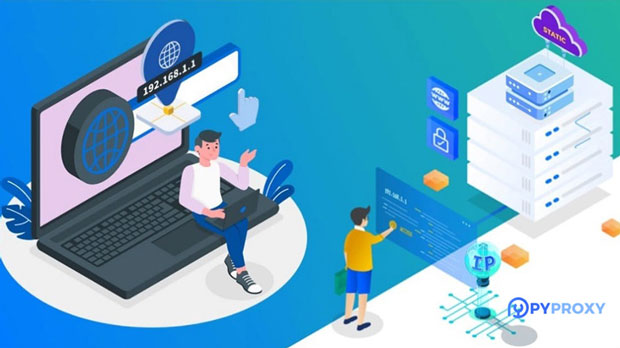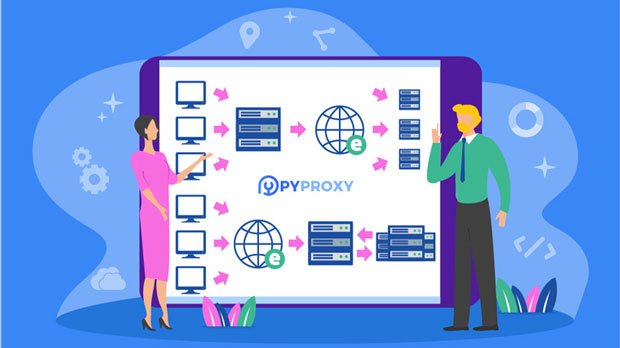In the world of online gaming, having a stable, secure, and fast internet connection is critical to ensuring smooth gameplay. One tool that many gamers use to enhance their experience is a socks5 proxy. A SOCKS5 proxy is a type of internet protocol that routes traffic between the user and the target server. Free socks5 proxies, particularly those based in the United States, have gained popularity among gamers who wish to mask their IP addresses, access geo-restricted content, or reduce lag by routing traffic through a different server. However, free services come with certain risks and limitations, which can affect both performance and security. This article will explore the advantages, challenges, and important considerations when using free SOCKS5 proxies for online gaming. What is a SOCKS5 Proxy and How Does it Work?A SOCKS5 proxy is a type of internet protocol that facilitates communication between a client (such as a gamer) and a server (such as a game server) through a third-party intermediary. Unlike other types of proxies, SOCKS5 does not alter or restrict the types of internet traffic that pass through it, meaning it supports a wide range of applications, including gaming, email, torrenting, and more.SOCKS5 proxies are often used for their ability to handle different types of network protocols, offering more flexibility than standard HTTP proxies. By acting as an intermediary, a SOCKS5 proxy masks the user's IP address, making it harder for external parties to track their activities. This functionality is especially useful for gamers who want to maintain privacy or bypass geographical restrictions set by gaming platforms or content providers.Why Gamers Choose Free SOCKS5 Proxies in the United StatesGamers in the United States, as well as internationally, often face challenges related to lag, latency, and geo-blocking while playing online games. For example, certain games or content may only be available in specific regions, or a server in a particular location might offer a faster connection. In such cases, a proxy can help by routing traffic through a server in the desired location.Free SOCKS5 proxies, particularly those based in the U.S., can offer a solution to these problems. They allow gamers to connect to servers in the United States, even if they are physically located in another country, reducing the likelihood of lag and latency. Additionally, some free SOCKS5 proxies provide an extra layer of anonymity, allowing users to bypass regional restrictions and access servers or content that would otherwise be unavailable.However, while the appeal of free proxies is strong, gamers need to understand the potential downsides. Free proxies may come with lower speeds, increased latency, and, in some cases, security risks that could jeopardize the user's privacy and data.Benefits of Using Free SOCKS5 Proxies for Online Gaming1. Bypass Geo-restrictions One of the most common reasons gamers use proxies is to bypass geo-restrictions. Many online games have region-specific servers or content that can only be accessed from certain locations. Free SOCKS5 proxies allow users to appear as if they are in the U.S., giving them access to servers that are otherwise restricted to that region. This is particularly useful for gamers who wish to play games that are only available in certain countries or who want to access specific content from another region.2. Reduced Latency and Faster Connection Some gamers use SOCKS5 proxies to route their connection through a server that offers a faster connection to the game’s servers. For example, a player located in Europe may use a U.S.-based proxy to access a server located in North America, reducing ping times and improving the overall gaming experience. This can result in smoother gameplay, fewer disconnections, and an overall enhanced performance, particularly for competitive gamers.3. Enhanced Privacy and Anonymity Free SOCKS5 proxies mask the user's real IP address, which adds an additional layer of privacy. This can protect gamers from potential tracking by game developers, advertisers, or even other players. By masking the true location of the player, it can also reduce the risk of targeted attacks, such as DDoS (Distributed Denial of Service) attacks, which are common in online gaming.Challenges and Risks of Using Free SOCKS5 Proxies for Gaming1. Slow Speeds and Connection Drops One of the biggest drawbacks of using free SOCKS5 proxies is the potential for slow speeds and frequent connection drops. Since free proxies are often oversubscribed with many users, the available bandwidth is divided among them, which can lead to slower internet speeds. This can significantly affect the gaming experience, causing lag, high latency, and even disconnections during critical moments in a game.2. Security and Privacy Concerns Not all free SOCKS5 proxies offer strong security measures. Some may log user activity, while others may not encrypt traffic properly, leaving users vulnerable to cyber-attacks or data theft. Using a free proxy means trusting a third-party service with sensitive data, which can be risky if the provider is unreliable or malicious. Gamers who prioritize privacy may find this to be a significant drawback.3. Limited Reliability and Uptime Free SOCKS5 proxies may not always be reliable. Since they are provided without cost, the providers often have less incentive to maintain consistent uptime or ensure quality service. This can result in frequent downtime, causing interruptions in the gaming experience. For competitive gamers, even brief disconnects can be disruptive and frustrating.4. Potential for IP Bans and Restrictions Some online gaming platforms actively monitor and block IP addresses that are associated with proxies. If a free socks5 proxy is used too frequently or becomes flagged by a gaming server, users may face IP bans or other restrictions that prevent them from accessing the game. This is a risk that all proxy users face, but it can be more prevalent with free services that are used by many individuals.How to Maximize the Benefits of Free SOCKS5 Proxies for Online Gaming1. Choose Proxies with Low Latency Not all SOCKS5 proxies are created equal. When choosing a free SOCKS5 proxy, gamers should prioritize those that offer low latency and fast speeds. While free proxies may not always be as fast as paid alternatives, finding one with servers near gaming locations can help reduce lag and improve the overall gaming experience.2. Use Proxies for Privacy, Not Speed If high-speed performance is crucial, gamers should consider using SOCKS5 proxies primarily for privacy purposes rather than for boosting speeds. In this case, the focus should be on anonymity and security rather than reducing latency or increasing connection speed.3. Monitor Proxy Performance Regularly Given the variability of free proxy services, it's essential for gamers to regularly test and monitor the performance of their proxies. This will help identify when a particular proxy is slow or unreliable, allowing gamers to switch to a different one before performance is severely affected.ConclusionFree SOCKS5 proxies offer several benefits for online gamers, including the ability to bypass geo-restrictions, enhance privacy, and reduce latency. However, there are significant challenges and risks associated with using free services, including slower speeds, security concerns, and the potential for connection instability. Gamers should carefully weigh these factors and use free proxies with caution. By selecting reliable servers, prioritizing privacy, and regularly testing performance, gamers can maximize the benefits of free SOCKS5 proxies while minimizing potential downsides.
Dec 27, 2024






















































